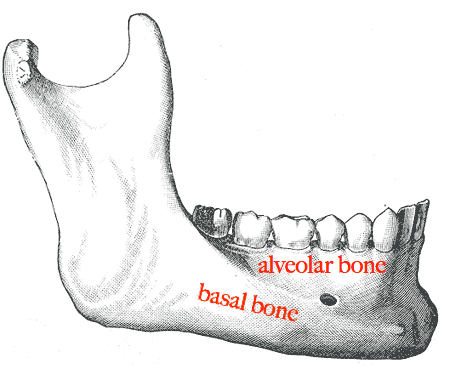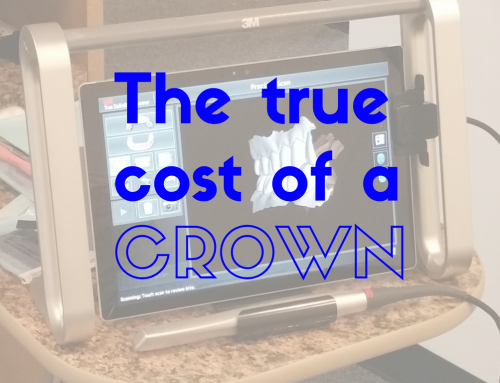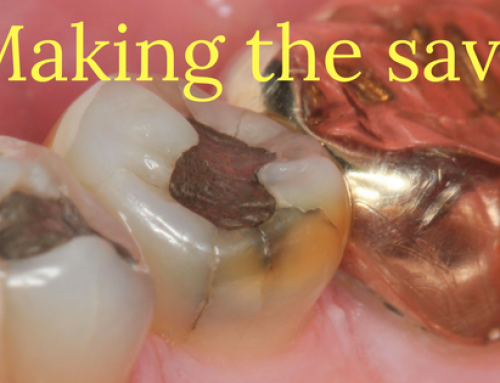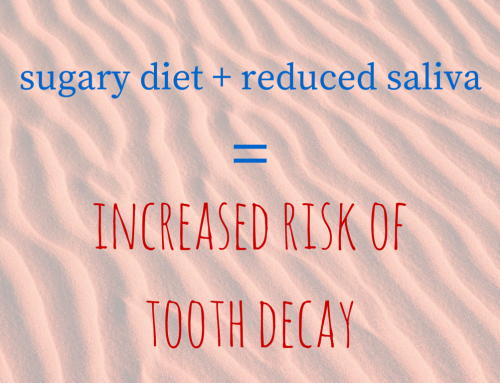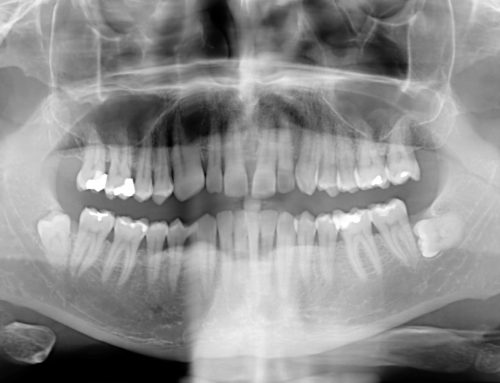Two words that have become familiar to anyone who watches TV. Osteoporosis, or decreasing bone density, is a common problem as we age. Although it is painless, it can increase risk of bone fracture which can precipitate all kinds of debilitating problems. So now, every time you turn on the television you see ads for medications that help prevent or slow bone loss due to osteoporosis.
Dentists see a very different kind of bone loss. Have you ever noticed that our stereotyped vision of an old person almost always includes that “caved in face” look around their mouth? That’s bone loss, too. But it’s a very specific kind of bone loss.
Our jawbones have a couple different kinds of bone. The part of the bone that holds the teeth in place is called alveolar bone. This kind of bone sits on top of the basal bone of our top and bottom jaws. The interesting thing about the alveolar bone is that it only serves to hold our teeth in place. If we lose a tooth, the alveolar bone that used to support that tooth shrinks away.
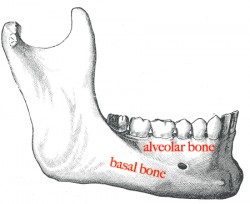 Alveolar bone shrinks away differently with different people, but for the most part a person loses 40-60% of the alveolar bone around a tooth that is removed within the first year. 40-60%! Worse than that, the more teeth someone loses, the more alveolar bone they’ll lose!
Alveolar bone shrinks away differently with different people, but for the most part a person loses 40-60% of the alveolar bone around a tooth that is removed within the first year. 40-60%! Worse than that, the more teeth someone loses, the more alveolar bone they’ll lose!
You might be thinking “what’s the big deal? So I lose a little bone. I won’t even notice it.”
Well, maybe. If you don’t want to replace the tooth this might not be that big of a deal. If you replace the tooth with something removable (a denture or a partial) you’ll find that it continues to fit more poorly as you lose bone. If you replace the tooth with a bridge you might notice a space opening underneath the “fake” tooth. Or possibly the teeth holding the bridge in place begin to lose support as well.
“O.K., Doc. I get it. I don’t want to lose bone in my jaw. What can I do?”
I’m glad you asked! So it turns out that you can maintain that alveolar bone by replacing teeth with dental implants! Most people have heard that dental implants are a great treatment for replacing missing teeth. But did you know that placing a dental implant will help you maintain that alveolar bone? What a cool side effect!
When you place a dental implant it acts a lot like the tooth that was lost. The alveolar bone is maintained to hold the implant in place and you get tooth-like function and esthetics to boot! Dental implants kind of act like a time machine for your jaw bone by turning back the effects of alveolar bone loss!
Did you find this post timely? Restorative? I’d love to hear about it! You can share any Mead Family Dental post with a “Like” on Facebook, a “+1″ on Google+ or you can even “Tweet” it with Twitter! All you need to do is hover over the heart shaped button next to the title of the post. Or you can leave a comment by clicking on the balloon shaped icon next to the title.
If you’re looking for a dentist in Saginaw, we’re always happy to accept new patients! You can request an appointment online or call the office at (989) 799-9133. And, as always, you can email me at alan@meadfamilydental.com. I always answer my own emails!

